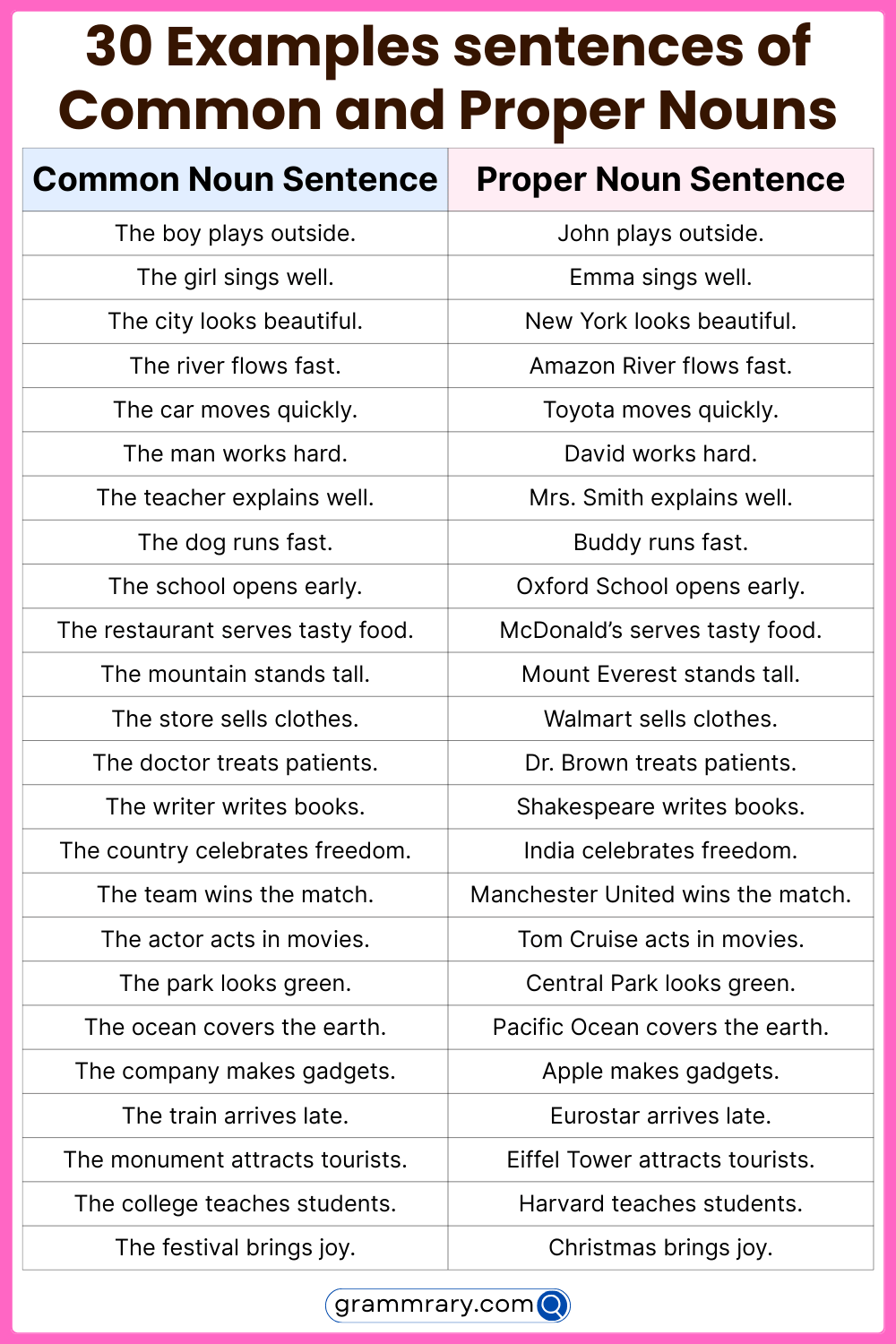When it comes to understanding the English language, it is important to differentiate between common nouns and proper nouns. Common nouns refer to general, non-specific people, places, or things, while proper nouns refer to specific, unique entities. In this article, we will explore some common noun proper examples to help you grasp this concept better.
Common nouns are used to name general items, whereas proper nouns are used to name specific items. For example, “car” is a common noun, while “Toyota Camry” is a proper noun. Understanding the distinction between the two is essential for effective communication in English.
Examples of Common Noun Proper
1. City:
Common Noun – city
Proper Noun – New York City
In this example, “city” is a common noun, while “New York City” is a proper noun because it refers to a specific city.
2. Animal:
Common Noun – dog
Proper Noun – Labrador Retriever
Here, “dog” is a common noun, but “Labrador Retriever” is a proper noun as it refers to a specific breed of dog.
3. Country:
Common Noun – country
Proper Noun – United States
In this case, “country” is a common noun, while “United States” is a proper noun denoting a specific country.
4. Person:
Common Noun – teacher
Proper Noun – Ms. Smith
“Teacher” is a common noun, but “Ms. Smith” is a proper noun as it refers to a specific individual.
5. Food:
Common Noun – fruit
Proper Noun – Fuji apple
In this example, “fruit” is a common noun, while “Fuji apple” is a proper noun because it denotes a specific type of fruit.
In conclusion, understanding common noun proper examples is crucial for effective communication in English. By recognizing when to use common nouns and proper nouns, you can convey your thoughts more clearly and accurately. Practice identifying common and proper nouns in everyday speech and writing to enhance your language skills.
